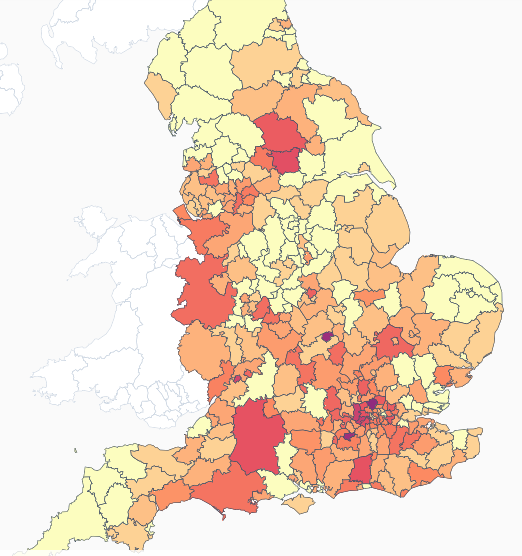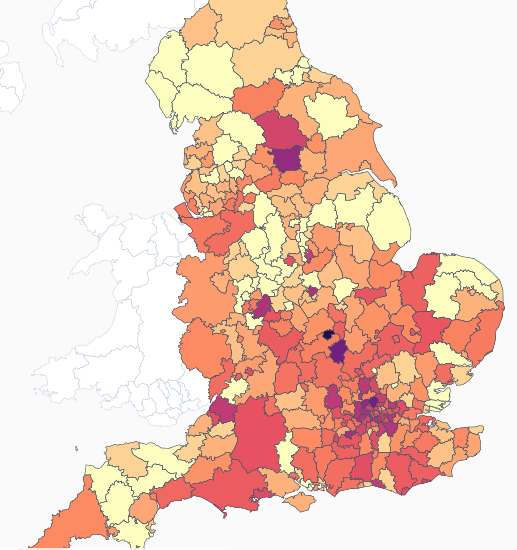OMICRON’S stealth ‘sister’ sub-variant is steadily spreading across the UK.
Maps seven days apart have shown how it is moving through the country.


London and surrounding counties are still seeing the most cases in general.
But other hotspots, like Northampton, Leeds, Milton Keynes, Birmingham and Leicester are also cropping up.
Northampton has an estimated 908 cases, while Ealing has 755.
It is known as BA.2, and has many of the same mutations as original Omicron – with current case rates still low in comparison.
A string of positive studies show Omicron is milder than other strains in the vaccinated – with vaccines thought to still be effective against this new variant, BA.2.
The latest data from UKHSA found it appears to be able to spread faster than original Omicron.
But crucially, experts have said there is little evidence of it being any more severe.
Studies from Denmark, where the sub-variant makes up more than half of all Omicron cases, shows no difference in hospitalisation risk.
It doesn’t seem to cause a more serious illness than original Omicron – which is more cold-like for most people, especially the vaccinated.
Health officials in Denmark, who have seen the most cases of BA.2 so far, say Covid vaccines are thought to still be as effective.
The Wellcome Sanger Institute – which produces maps of variants spreading in the UK – revealed that BA.2 is now more common than Delta.
As of January 24, 1,072 cases had been found in England by UKHSA – but the Sanger Institute maps estimate there were around 40,000 cases by January 29.
Dr Meera Chand, Covid-19 Incident Director at UKHSA, said: “It is the nature of viruses to evolve and mutate, so it’s to be expected that we will continue to see new variants emerge as the pandemic goes on.
“Our continued genomic surveillance allows us to detect them and assess whether they are significant.
“So far there is insufficient evidence to determine whether BA.2 causes more severe illness than Omicron BA.1, but data is limited and UKHSA continues to investigate.

“Case rates remain high throughout the UK and we must remain vigilant and take up vaccinations. We should all continue to test regularly with LFDs and take a PCR test if symptoms develop.”
It comes as Boris Johnson will lay out plans to scrap all remaining Covid laws in days – and finally draw a line under the pandemic.
It will include abolishing the requirement for people who catch coronavirus to self-isolate for six days.
The PM will ditch the quarantine requirement at the end of February – a full month before it was originally earmarked to lapse on March 24.
Downing Street hailed the super vaccine rollout for letting England throw off the restraints early and get back to normal.
Mr Johnson told MPs this afternoon he will unveil his full plan to “live with Covid” on Monday February 21.
His spokesman said: “Obviously in the same way that someone with flu, we wouldn’t recommend they go to work, we would never recommend anyone goes to work when they have an infectious disease.”






